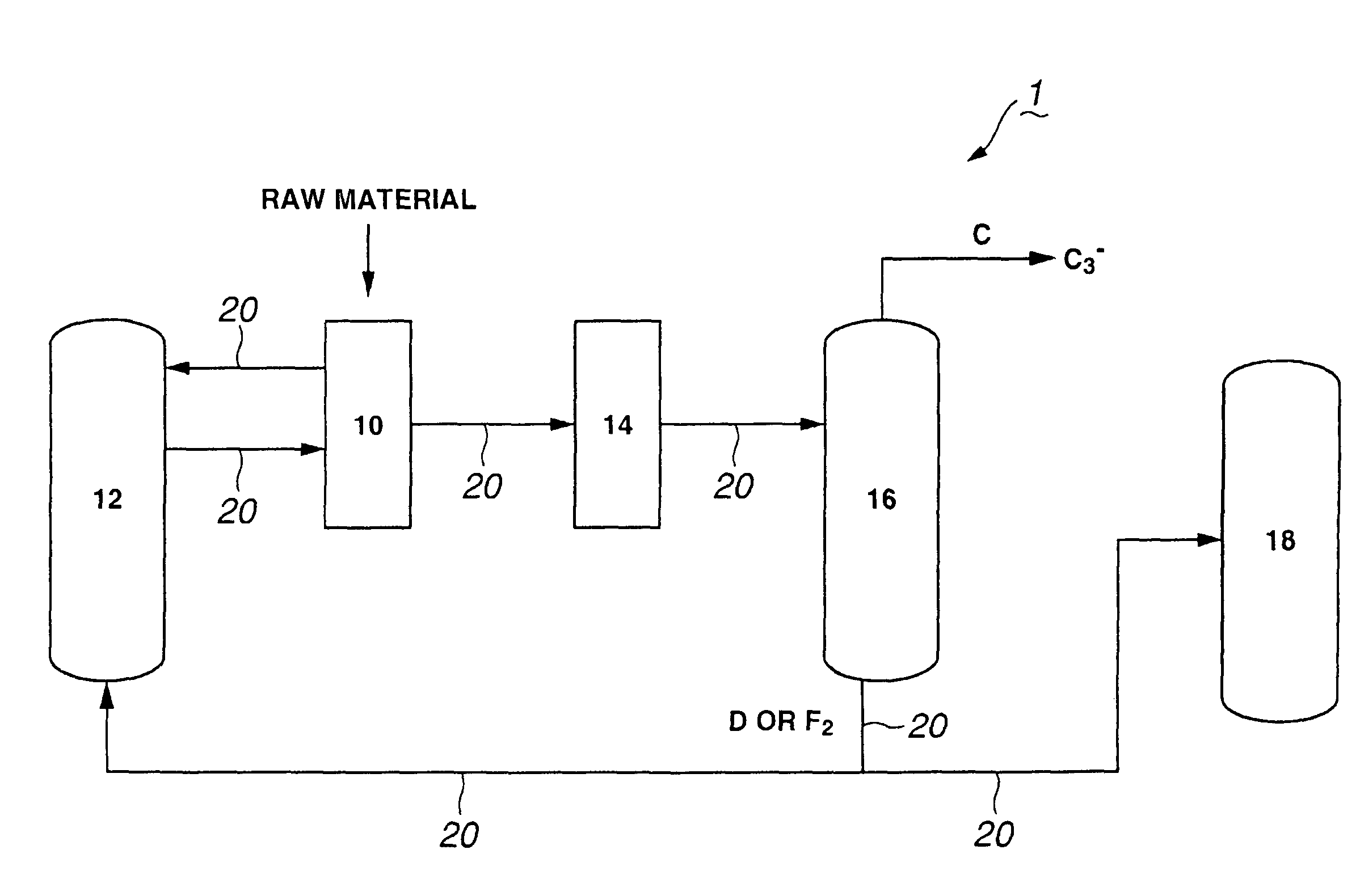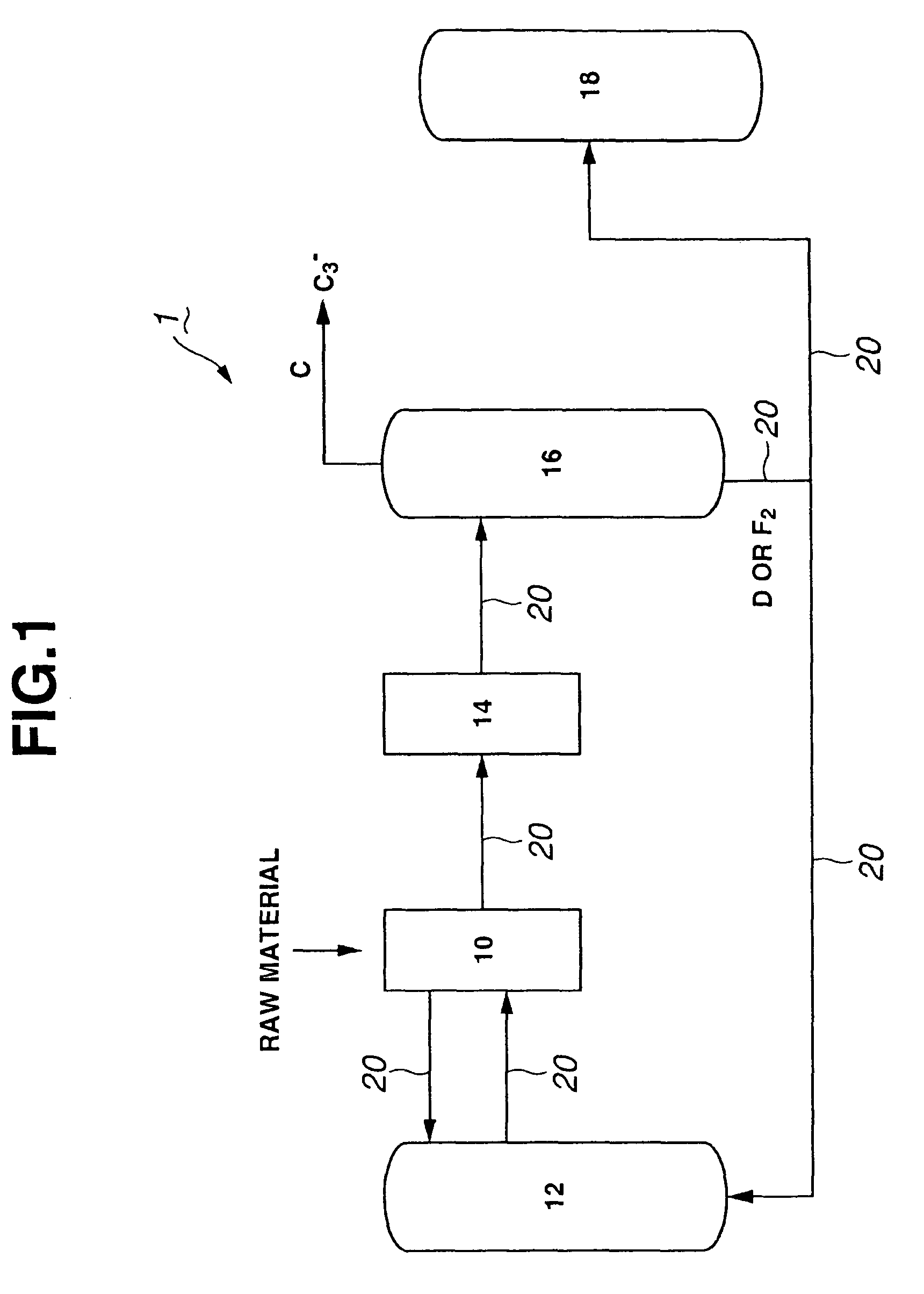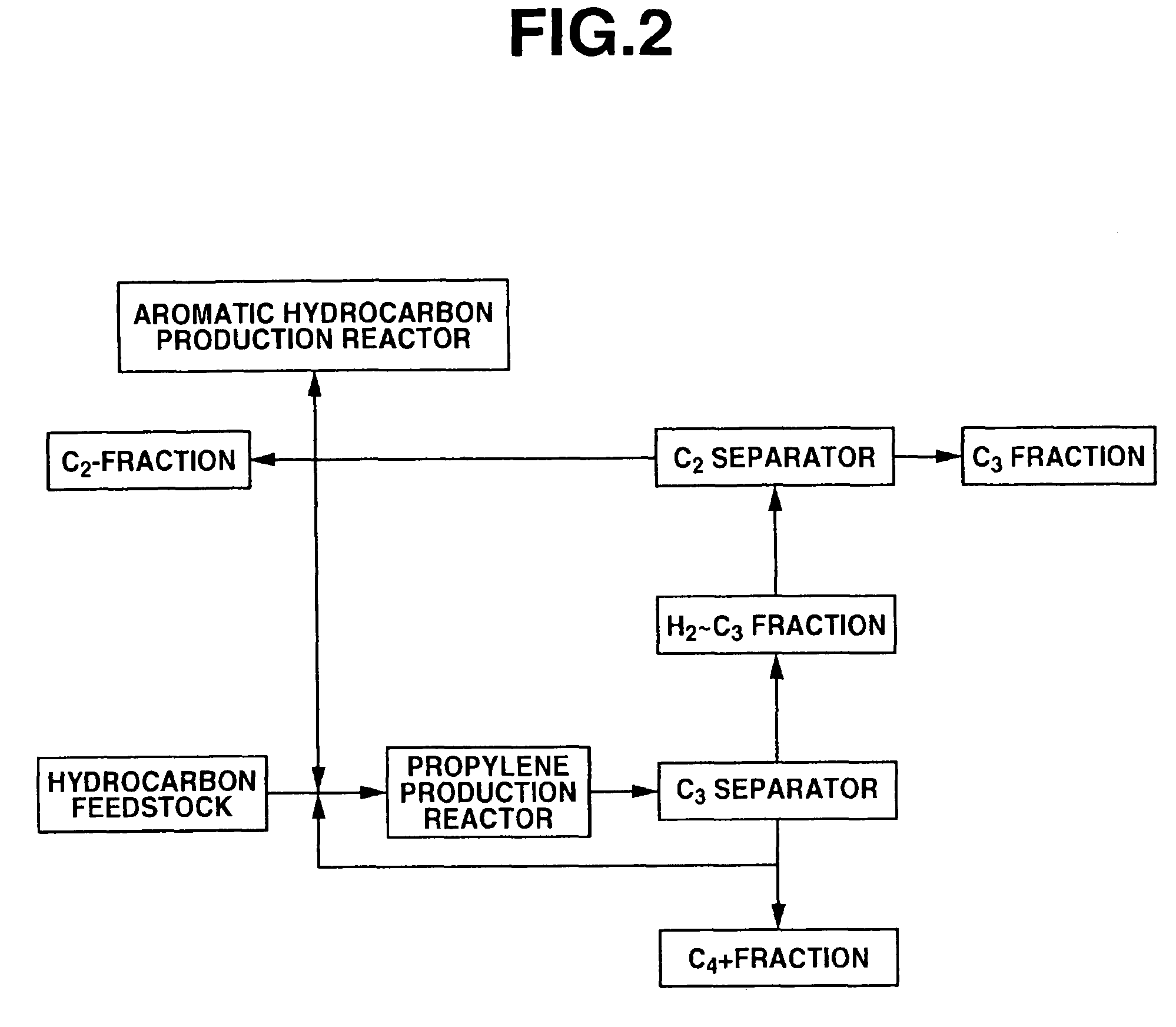Process for producing propylene and aromatic hydrocarbons, and producing apparatus therefor
a technology of propylene and aromatic hydrocarbons, which is applied in the direction of hydrocarbon oil treatment products, bulk chemical production, physical/chemical process catalysts, etc., can solve the problems of high production cost, high production cost, and high production cost, and achieves easy production ratios, efficient and stable production, and the effect of promoting equipment soiling
- Summary
- Abstract
- Description
- Claims
- Application Information
AI Technical Summary
Benefits of technology
Problems solved by technology
Method used
Image
Examples
example 1
[0180]An Na-type ZSM-5 extrudate with a SiO2 / Al2O3 molar ratio of 1200 (containing 30% by mass of SiO2 binder, 1.6 mmφ, purchased from Nikki Universal Co., Ltd., Japan) was dispersed in an 0.02 N aqueous silver nitrate solution (10 cc / g-molded zeolite), and subjected to ion-exchange treatment at 60° C. for 1 hour, a treatment that was repeated twice. This was then filtered, water-washed and dried to prepare catalyst A-1. The Ag content of catalyst A-1 as measured by fluorescent x-ray analysis was 0.22% by mass.
[0181]A Hastelloy C reactor with an inner diameter of 27 mm was filled with catalyst A-1, which was then steamed for 5 hours under conditions of temperature 650° C., steam flow rate 214 g / hr, nitrogen flow rate 400 NL / hr, and pressure 0.1 MPaG. After steaming treatment, the amount of proton of catalyst A-1 was 0.002 mmol / g as determined by liquid phase ion exchange / filtrate titration. 60 g of the steamed catalyst A-1 was packed in a Hastelloy C reactor with an inner diameter o...
example 2
[0190]60 g of catalyst A-1 that had been steamed as in Example 1 was packed in a Hastelloy C reactor with an inner diameter of 27 mm.
[0191]Using C4 raffinate-2 shown in Table 1 as the raw material, a propylene production reaction was performed with a reaction temperature of 550° C., a C4 raffinate-2 supply rate of 220.3 g / hr, a recycled C4+fraction supply rate of 139.7 g / hr (WHSV=6 hr−1), a steam supply rate of 108 g / hr and a reaction pressure of 0.1 MPaG, the resulting reaction product was supplied to a distillation column and separated into a H2˜C3 fraction and a C4+fraction, and about 56% of the C4+fraction was recycled back to the reactor.
[0192]The propylene production reaction was continued for 2 days, after which the catalyst was regenerated under the following conditions: regeneration temperature 500 to 550° C., regeneration pressure 0.5 MPaG, nitrogen+air flow rate 1008 NL / hr, oxygen concentration 1 to 5 vol %, regeneration time 10 hours. The yields based on C4 raffinate-2 (...
example 3
[0195]A propylene production reaction was performed under the same conditions as in Example 2 except that the C4 raffinate-2 supply rate was 279.1 g / hr, the recycled C4++fraction supply rate was 80.9 g / hr (WHSV=6 hr−1), and about 33% of the C4++fraction was recycled back to the reactor. The yields based on the C4 raffinate-2 (% by mass) are shown in Table 1. The propylene yield based on C4 raffinate-2 was 33.24% by mass 2 hours after the start of the reaction, and 31.35% by mass 48 hours after the start of the reaction. The value obtained by dividing the amount of component (% by mass) of the C6-8 aromatic hydrocarbons produced in the reactor by the hydrocarbon partial pressure [MPa] was 4.8.
[0196]An aromatic hydrocarbon production reaction was performed under the same conditions as in Example 1 except that the raw material was the C4+fraction obtained in this Example 3. The yield of C6-9 aromatic hydrocarbons was 46.3% by mass 8 hours after the start of the reaction and 45.5% by ma...
PUM
| Property | Measurement | Unit |
|---|---|---|
| molar ratio | aaaaa | aaaaa |
| molar ratio | aaaaa | aaaaa |
| partial pressure | aaaaa | aaaaa |
Abstract
Description
Claims
Application Information
 Login to View More
Login to View More - R&D
- Intellectual Property
- Life Sciences
- Materials
- Tech Scout
- Unparalleled Data Quality
- Higher Quality Content
- 60% Fewer Hallucinations
Browse by: Latest US Patents, China's latest patents, Technical Efficacy Thesaurus, Application Domain, Technology Topic, Popular Technical Reports.
© 2025 PatSnap. All rights reserved.Legal|Privacy policy|Modern Slavery Act Transparency Statement|Sitemap|About US| Contact US: help@patsnap.com



